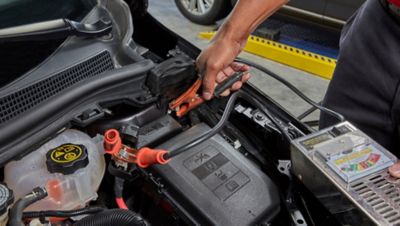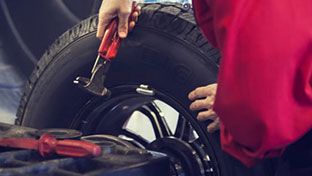Did you know that more than 700,000 auto accidents each year in the U.S. are rain-related? No matter what part of the country you call home, you can count on rainy, slushy, slick or soggy driving conditions throughout the year, according to the Department of Transportation and the National Weather Service. Following these driving tips will help you sharpen your wet-weather street smarts and stay safer on the roads during rainy conditions.

CAUSE FOR CONCERN
Driving on wet surfaces can reduce reaction times and present safety challenges because:
- Your tires—specifically the tread—must work extra hard to maintain grip.
- Damp conditions and darker skies make it difficult to see what's ahead.
PREPARATION FOR PRECIPITATION
If rain is in the forecast, but staying home isn't an option, this easy-to-follow checklist can help get you on your way before you leave your driveway.
- Allow for extra time: Give yourself more time than you think you will need to get to your destination. Wet roads are not the place to rush, so drivers, like yourself, will be traveling more slowly than usual.
- Turn on headlights: This rule of thumb applies if it's anything but sunshiny outside. Headlights help you see the road, and they help other motorists to see you. Remember, safety is a two-way street.
- Defog windows: Stormy weather can quickly cloud your windshield. The fastest fix is to turn on your front and rear defrosters, along with the air conditioner if it doesn't automatically turn on.
RAINY DRIVE DO'S AND DO NOT'S
- Check your tires: A wet-weather trip requires more grip than normal. Check your tires to be sure you have enough tread to grip wet roads. Not sure how to tell? Learn how to do a one-minute tire inspection.
- Be prepared for slick surfaces: If it hasn't rained in a while, roads may be extra slick due to grease and oils that collect over time. This is particularly true during the first hours of rainfall before the residue washes away.
- Avoid large pools of standing water: If you're approaching a large puddle, drive around it. Use the curb as a gauge to tell how deep it is. Not sure? Drive around it. If water gets into your engine compartment, you risk damaging your internal electrical system. Not only can this be costly, but it could leave you stranded.
- Tap your brakes post-puddle: It's a good idea to tap your brakes gently after driving through shallow water to help rid your rotors of water so your brakes are relatively dry when you need them. Learn more about how brakes work.
- Do not drive through running water: If the water is rushing with a force greater than the weight of your vehicle (which you won't know until it's too late), your car could quickly become a watercraft, where the steering wheel, brake and gas pedals are useless. Even if you have all-wheel drive, do not attempt to cross running water. The risks just aren't worth it.
- Hug the middle: Many roads have a rounded middle so water can run off to the sides. If it's possible to do so while also keeping a safe distance from other traffic and median dividers, hug the middle of the road to steer clear of standing water. Not an option? Drive extra slowly and follow the tire path of the car in front of you where water has been temporarily dispersed.
- Use brake lights and turn signals earlier: Earlier braking gives you a greater cushion between your car and the one in front of you, and also gives the driver behind you more time to follow suit. Early use of turn signals also gives everyone a heads-up of your plans with plenty of time to slow down.
- Do not turn on cruise control: Reaction time is key when driving in all weather conditions, but particularly when precipitation is at play. If you were to hydroplane, your car may actually speed up if the cruise control is engaged. Your pedal foot needs to be active at all times, not standing by while the cruise control does the work.
- Avoid sudden movements if hydroplaning: Should your car start to hydroplane—another word for skidding on water—slowly step off the gas and steer straight until your tires regain traction. Don't steer sharply or slam on the brakes. If you must brake, tap them. If you have anti-lock brakes, firmly—but not quickly—put your foot all the way down. Learn more about how to handle hydroplaning.
- Know when to call it quits: If the rain is coming down so hard that the road is hard to see or you can't see the car in front of you, don't be a hero. Pull over and wait it out.
Don't let rainy days ruin your plans. Stay safe by sharpening your wet-weather driving skills. Raincoat? Check. Umbrella? Check. Driving tips for a safer rainy road trip? You bet—all set!

